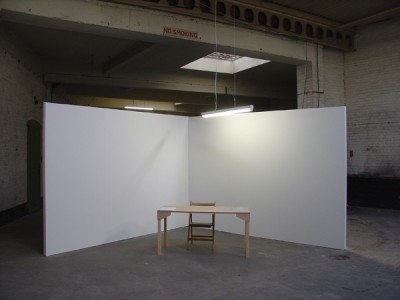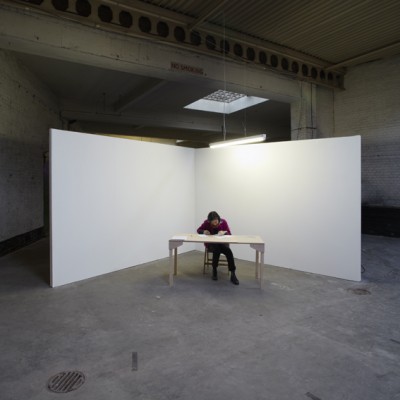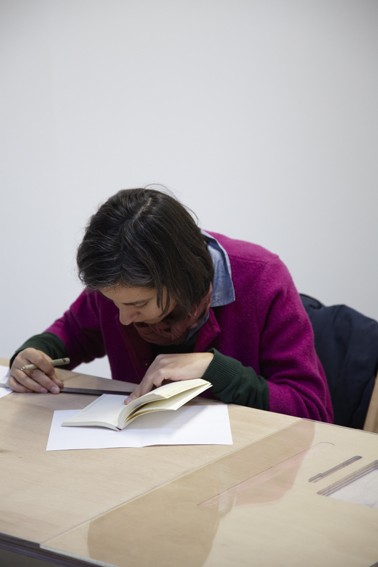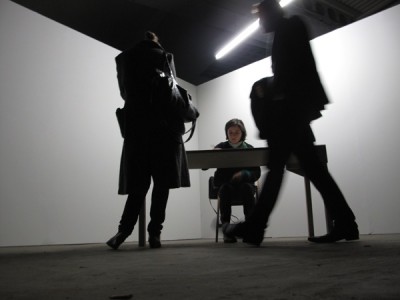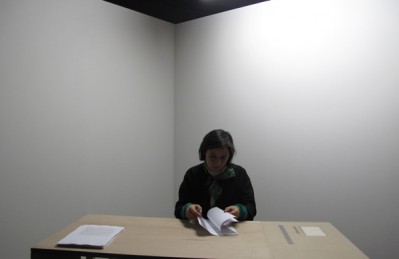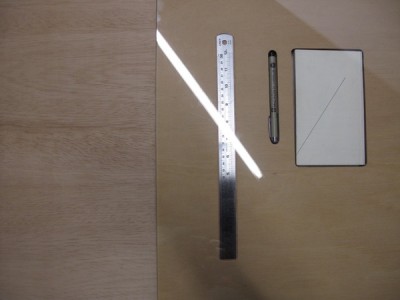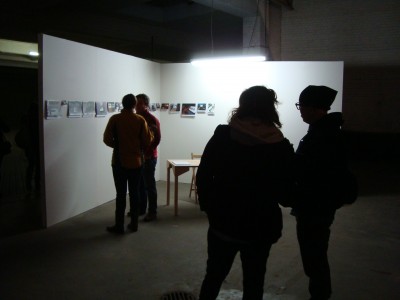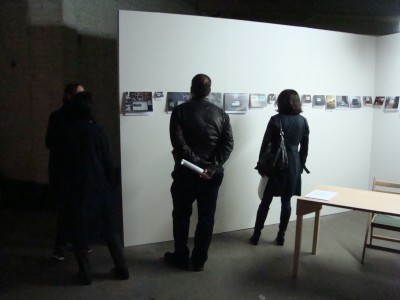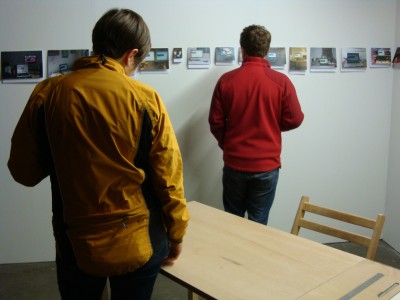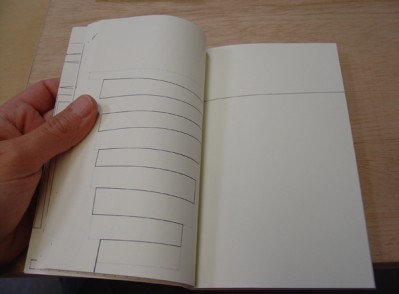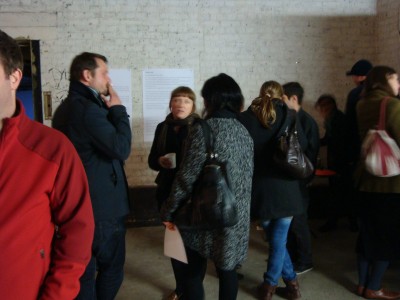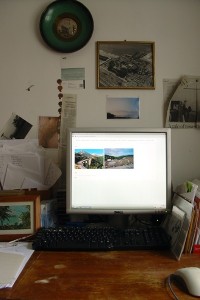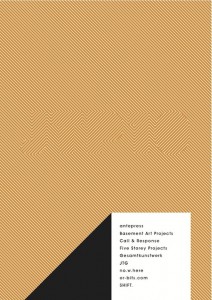or-bits.com presents Maria Theodoraki’s Here en Route at JT Gallery.
By continuing its exploration of presenting works in translation, or-bits.com has invited Maria Theodoraki to present her online work here at JT Gallery during the exhibition JTP10.
Moving from the online to the offline, Theodoraki’s work aims to reconcile the limitless and elusive distance between the virtual and the physical with that of the route between her house and the gallery. By starting from a reflection on the physical distance between her coupled postcards, Theodoraki’s project confronts the ‘from A to B’. Is a mappable distance, and a suggested trajectory, a place? Or an extension of here?
Theodoraki’s Here en Route is a live time-based project that will develop during the 25 days of JTP10 exhibition.
Here en Route will be evolving both in the gallery and the outside, generating a here which will encompass two spaces (the exhibition and the urban space), two audiences (the gallery visitors and the inhabitants along Theodoraki’s route), as well as two distinct, yet related, routes and ways of connection between the artist and her public.
Theodoraki will be working every day, for two hours, at her desk in the gallery space till the end of JTP10.
On the 7th November, your are cordially invited to a closing event at the gallery, where from 4 to 6 pm, Theodoraki will be guiding you through Here en Route and the responses gathered from the people she will have met during the 25 days of the project.
images courtesy Guy Archard
//opening and closing events//
images courtesy Efi Paleologou
||||||||||||||||||||
Notes on Here en Route by Marialaura Ghidini.
Any ‘from A to B’ suggests a route between two set points in space. In the case of Theodoraki’s project the route has been determined by Google maps, which suggested the itinerary from her house to JTG gallery. Here en Route is a complex journey from an A to a B; in fact, it does not focus on the start and end points of a journey, nor just on the route, but on the way in which the As and Bs will be brought together through encounter.
“They sit comfortably one next to the other, they somehow connect, they click”; this is what Theodoraki tells me about the postcards she paired in her work here, made for or-bits.com in 2009.
here, from which Here en Route stems from, is a work also about journeying. It depicts fragments of routes in sequence, and offers to the viewer excursions into what is a series of seemingly fictionalised landscape views; and yet, these journeys are not simply movements from a point to the other, they are voyages into Theodoraki’s view point.
here toys with the notion of the nearness in space and time; and generates an allegory of proximity, which is what is given to the viewer by the artist. Here en Route operates in a similar way by somehow reverting to the origin of the artistic process of the artist herself. Although it is still the artist’s gaze which guides the audience into her ‘in-between A and B’, it is also the sought encounter with the same audience that, conversely, will be connecting Theodoraki with her itinerary.
Both here and Here en Route incorporate allegory and symbolism.
In The allegorical impulse: Toward a Theory of Postmodernism (October, 13 – 1980), Craig Owens discusses the urge to allegory in contemporary artistic practice of that time, and also examines its mechanism. Owens observes that the model for allegorical work is the palimpsest, in which “one text is read through another, however fragmentary, intermittent, or chaotic they relationship might be”.
Allegory adds a meaning to something already existing – while straightaway merging with it – and generates “an object, a place or an area that reflects its history”, like – as Owens writes – a palimpsest.
Theodoraki’s work encompasses allegories addressed to the eye, extending the meaning of what she uses in her investigations; and thus layering series of narratives on top of each other.
In Here 1, Here 2, Here 3 generic postcards views are transposed into a timeless state and become a representation of places as – I am drawn to think – they might exist in the mind of the artist. The network of Theodoraki’s views, which refers to sources in absence, generates a new unified mental (and visual) landscape since the artist proposes her own strategy of decodification; her own connecting points.
Here en Route is a spatiotemporal development of this previous work that, through employing a two-fold narrative element, brings the fragmentary relation between outwardly distant spaces (which are the theres as seen by the other) into the here of the artist, and vice-versa.
Theodoraki’s almost ritualistic presence in her work unifies a complex web of trajectories beyond that which is explicit to the eye, or shown on a computer-generated map.
||||||||||||||||||||
